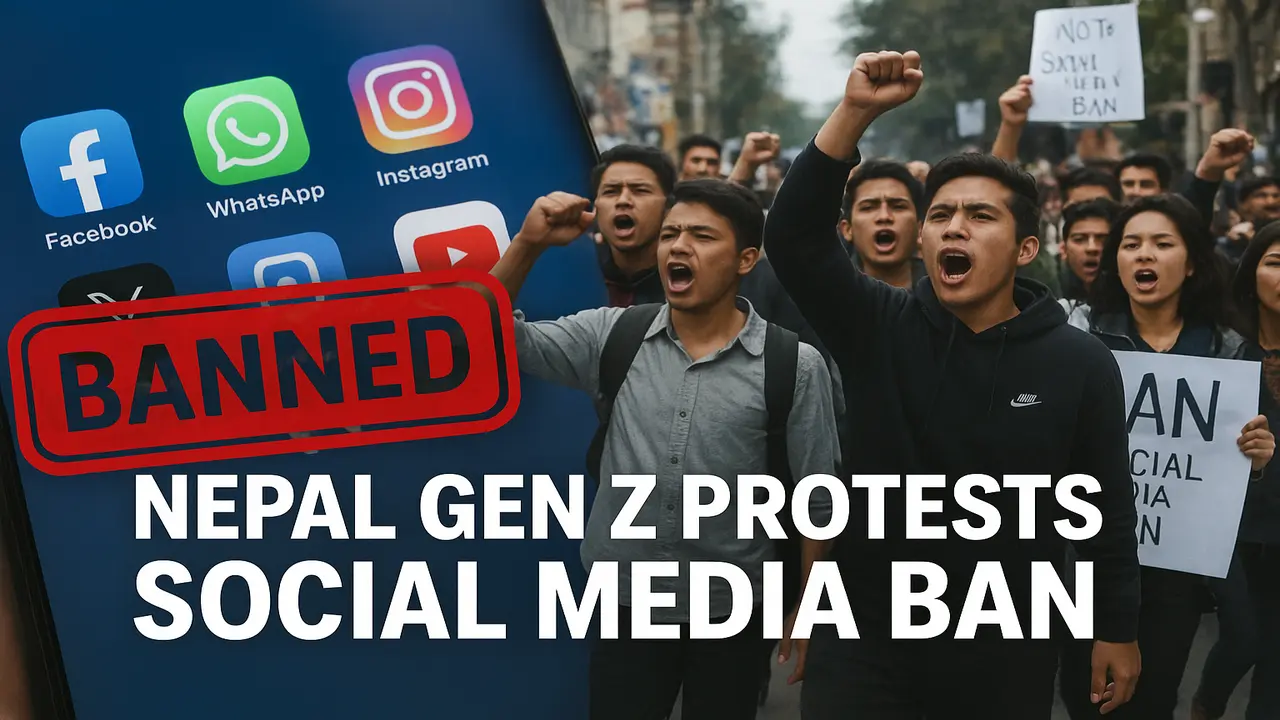Blog
Nepal Gen Z Protests: Social Media Ban and Deadly Youth Clashes

The Nepal Gen Z Protests erupted after the government banned 26 social media platforms. Clashes left 19 dead, forcing the government to lift the ban and promise reforms.
The Nepal Gen Z Protests have shaken Nepal’s political and social foundation. What began as a ban on 26 popular social media apps quickly turned into one of the deadliest youth uprisings in recent memory.
On September 8, 2025, thousands of young people poured into the streets of Kathmandu, Pokhara, Biratnagar, and several other cities. They were angered by the sudden ban on Facebook, Instagram, WhatsApp, YouTube, and X. For Nepal’s Generation Z, social media is not just for fun; it is a lifeline for communication, activism, education, small businesses, and free expression.
The government argued that these platforms failed to register under local laws and were spreading fake news. Officials claimed the restrictions were necessary for national security. But for the youth, this was an attack on their digital rights. The Nepal Gen Z Protests began as a cry for freedom, but they soon transformed into a broader demand for justice and accountability.
The protests, initially peaceful, quickly escalated into violence. In Kathmandu, demonstrators gathered near government offices, chanting slogans against corruption and demanding that the ban be lifted. Security forces responded with tear gas, rubber bullets, water cannons, and even live ammunition.
The clashes left the capital in chaos. Streets were filled with burning tires, blocked highways, and angry crowds. At least 19 people were killed—17 in Kathmandu alone—and over 200 were injured. Most victims were young students and professionals, making the loss even more painful.
The tragic deaths turned the Nepal Gen Z Protests into a national crisis. Families mourned their children, while activists accused the government of suppressing dissent through violence.
Political Fallout
The unrest had major political consequences. The Home Minister resigned after facing criticism for mishandling the situation. Human rights groups, both local and international, condemned the use of excessive force.
On September 9, 2025, Prime Minister K.P. Sharma Oli addressed the nation. He expressed deep regret for the loss of life and announced several key measures:
- The social media ban was lifted immediately.
- A special investigation committee would be set up within 15 days.
- Families of the deceased would receive financial compensation.
- Injured protesters would get free medical treatment.
These promises helped calm the situation temporarily, but distrust between youth and the government remains high.
Deeper Meaning of the Nepal Gen Z Protests
While the protests began with a social media ban, the anger reflects deeper issues:
- High unemployment rates among young people.
- Rising corruption and weak governance.
- Lack of political accountability.
- Limited opportunities for education and growth.
The Nepal Gen Z Protests became more than just a fight for digital freedom—they became a movement for dignity, respect, and a brighter future. Many see this as a turning point in Nepal’s democracy, where young voices can no longer be ignored.
These protests also highlighted the risks of over-regulation in the digital era. Instead of shutting down platforms, governments worldwide need to find balanced solutions that protect both citizens and free expression. The Nepal Gen Z Protests have shown that young people are ready to defend their rights and use technology as a tool for social change.
The Nepal Gen Z Protests show that today’s youth value freedom, justice, and accountability. In a digital world, banning social media is like silencing millions of voices. The tragic deaths left scars on families, but the movement also created hope.
Nepal’s Gen Z has proven that they are ready to stand up for their rights, and their unity could inspire similar movements across South Asia. The protests may mark the beginning of a new chapter in Nepal’s democracy.
